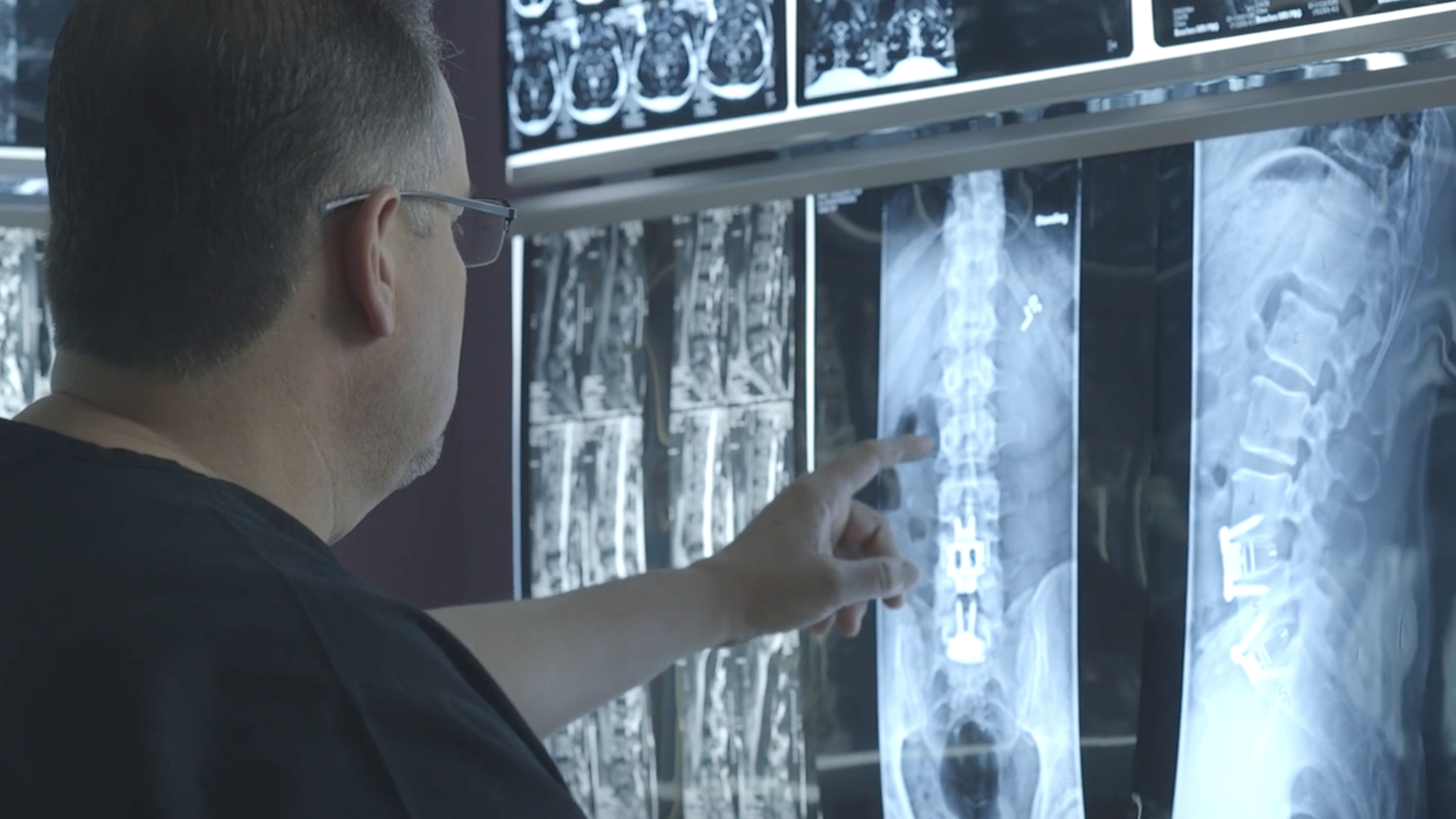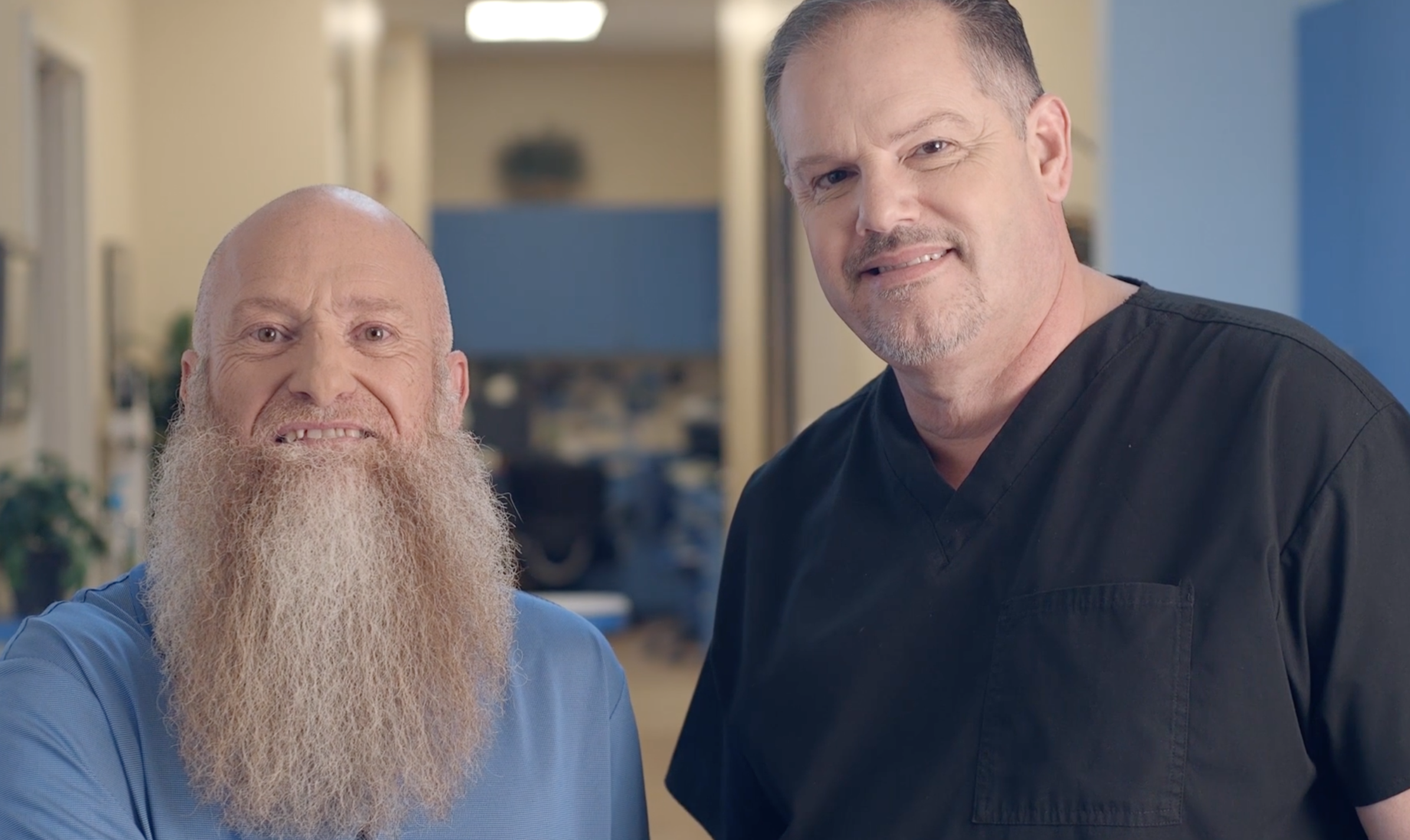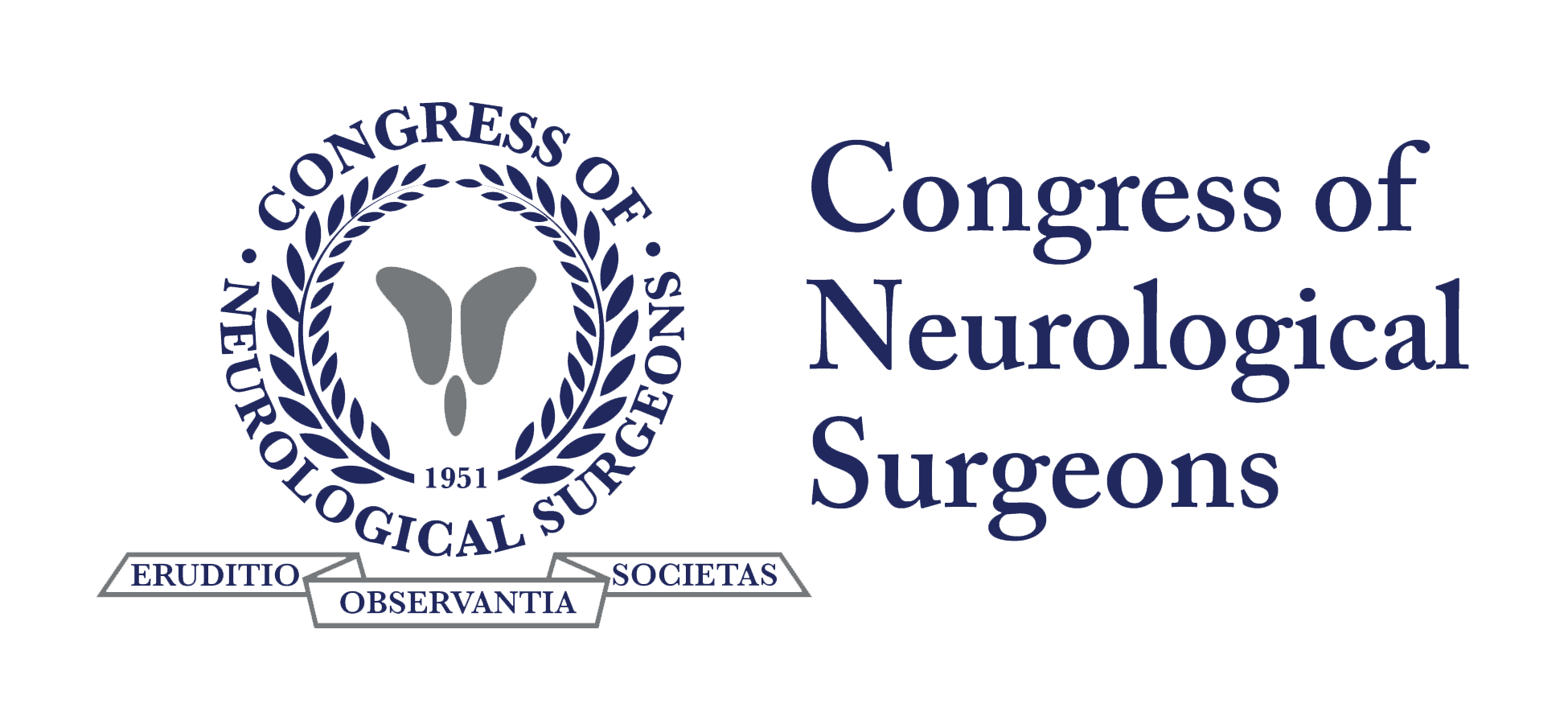Performing World Class Procedures
Read More Below about the Dr. Gomez’s Procedures



Anterior Cervical Disectomy & Fusion (ACDF)
Anterior cervical discectomy and fusion (ACDF) is a surgery to remove a herniated or degenerative disc in the neck. An incision is made on the anterior side (throat area) of the neck to reach and remove the disc. An interbody spacer is inserted to help fuse together the bones above and below the disc space. ACDF surgery may be an option if physical therapy or medications fail to relieve your neck or arm pain caused by pinched nerves. Patients typically go home the same day.
Figure 1. (top view of vertebra) Degenerative disc disease causes the discs (purple) to dry out. Tears in the disc annulus can allow the gel-filled nucleus material to escape and compress the spinal cord causing numbness and weakness. Bone spurs may develop which can lead to a narrowing of the nerve root canal (foraminal stenosis). The pinched spinal nerve becomes swollen and painful.
After the degenerated or herniated disc is removed, the space between the bony vertebrae is empty. To prevent the vertebrae from collapsing and rubbing together, an interbody spacer is inserted to fill the open disc space. The spacer serves as a bridge between the two vertebrae to create a spinal fusion. To facilitate fusion, the spacer may also be packed with a bone graft such as autograft (your own bone), cellular allograft (cadaver bone that contains stem cells), or a ceramic bone graft substitute (man-made plastic, ceramic or resorbable compounds). The spacer and adjacent vertebrae are fixed in place with metal plates and screws. Following surgery the body begins its natural healing process and new bone cells grow through and around the spacer. After 3 to 6 months, the new bone should join the two vertebrae and form one solid piece of bone. The metal plates and screws and fused spine segment work together, similar to reinforced concrete.
Anterior Lumbar Interbody Fusion (ALIF)
Anterior lumbar interbody fusion (ALIF) is a surgery to remove a herniated or degenerative disc in the lower spine.
Although most spinal surgeries are performed using a posterior (back) approach, your surgeon may choose an anterior (front) approach for a number of reasons, including:
- To avoid multiple surgeries in one area if you have already had previous spinal surgeries using a posterior (back) approach.
- To allow more direct access to the intervertebral disck.
- To have the ability to add more lordosis (swayback) to your spine.
- Your recovery may be quicker.
In contrast to a posterior approach to low back surgery, when your surgeon uses an anterior approach he or she can access your spine without moving the nerves. Organs and blood vessels must be moved to the side with an anterior approach, however. In most cases, a vascular surgeon assists the orthopaedic surgeon with opening and exposing the disc space.
In an anterior lumbar interbody fusion, the intervertebral disc between two lumbar vertebraek is removed. After the degenerated or herniated disc is removed, the space between the bony vertebrae is empty. To prevent the vertebrae from collapsing and rubbing together, an interbody spacer is inserted to fill the open disc space. The spacer serves as a bridge between the two vertebrae to create a spinal fusion. To facilitate fusion, the spacer may also be packed with a bone graft such as autograft (your own bone), cellular allograft (cadaver bone that contains stem cells), or a ceramic bone graft substitute (man-made plastic, ceramic or resorbable compounds). The spacer and adjacent vertebrae are fixed in place with metal plates and screws. In ALIF surgery, some interbody fusion implants are called stand-alone devices, incorporating the benefits of the spacer and plates into a single implant. Following surgery the body begins its natural healing process and new bone cells grow through and around the spacer. Over time, the new bone should join the two vertebrae and form one solid piece of bone. The metal plates and screws and fused spine segment work together, similar to reinforced concrete.
Spinal Fusion
Spinal fusion is a surgical procedure used to correct problems with the small bones in the spine (vertebrae). It is essentially a “welding” process. The basic idea is to fuse together the painful vertebrae so that they heal into a single, solid bone. Spinal fusion is a treatment option when motion is the source of pain — the theory being that if the painful vertebrae do not move, they should not hurt.
Lumbar Laminectomy
Lumbar laminectomy, also called open decompression, is a surgical procedure performed to treat the symptoms of central spinal stenosis or narrowing of the spinal canal. The surgery involves removal of all or part of the lamina (posterior part of the vertebra) to provide more space for the compressed spinal cord and/or nerve roots.
A lumbar laminectomy is an open surgery that is performed to alleviate pain caused by neural impingement due to spinal stenosis.
Lumbar laminectomy is typically considered after nonsurgical treatments such as physical therapy, medications, and/or epidural steroid injections have been tried for a period of 8 to 12 weeks without improvement.1
Lumbar laminectomy surgery aims to accomplish the following goals1:
- Relieve neural tissue compression. Stenosis of the spinal canal in the lumbar region may cause compression of the spinal cord, thecal sac, spinal dura, and/or the cauda equina. When one or more of these structures are compressed, neurogenic claudication (leg pain while walking or bending the spine backward) may occur, typically affecting both legs. Laminectomy helps relieve the compression of these neural tissues by widening the spinal canal.
- Improve leg function. Lumbar stenosis often causes decreased mobility due to pain and weakness in one or both legs. Laminectomy helps decrease pressure on the nerves, reducing leg pain, and potentially improving weakness and functionality of the lower back and legs.
One or more spinal motion levels may be treated together. It is important to note that lumbar laminectomy primarily aims to treat leg symptoms and not lower back pain. Back pain may persist even after the surgery due to pain from the continuing degeneration process or from causes unrelated to nerve or spinal cord compression.1–2
- Faster recovery times
- Reduced infection and blood loss
- Faster return to your regular lifestyle




“Very patient and skilled Surgeon. I trust him with my life.”
“I had an incredible experience and Dr. Gomez gave me my life back.”
He’s fantastic all around and I would highly recommend him.”
“I would like to thank Dr. GOMEZ
and his Staff.After my Surgery when ever i had a Question I always got an Answer and for the first time in a long time my right Arm and Shoulder are pain free”
“Dr Gomez did neck surgery on me 18 years ago, fusion C5-7. I would most definitely do it all over again. Right after the surgery I was able to function like people with full ROM. My arm quit going numb and my neck didn’t get stuck to the side anymore. What a blessing he was for me.”
“Dr. Gomez and office staff are amazing. Dr. Gomez saw me after years of misery with the orthopedic Dr’s.treatments. He did surgery to repair my lumbar spine and I am better than new. Dr. Gomez also repaired my husbands cervical spine that allowed him to move freely and painlessly. His office is pristine, and he is always on time. I would recommend Dr. Gomez to anyone.”
